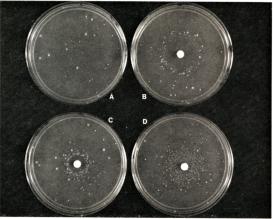Angela Creager's work examined how environmentalism, changing ideas of cancer causation, and new tools for detecting carcinogens interacted between the 1960s and the 1980s. In doing so, she sought to provide a new understanding of how technical developments as well as political trends affected perceptions and policies regarding human health and cancer prevention.
In the 1950s a group of geneticists, drawing largely on studies in radiation biology and medicine, advocated the idea that human cancers typically arose from mutations to somatic cells. The so-called somatic mutation theory shifted attention to the role of exogenous factors in tumorigenesis. Since that time, this theory has been so fully assimilated into current thinking about cancer that we often fail to recognize the novelty of its underlying assumption equating mutagenicity with carcinogenicity, i.e., that the mutagenizing ability of an agent such as radiation was responsible for inducing cancer. Because there appeared to be no threshold for genetic damage, even low-level exposures might induce cancer-producing somatic mutations. This understanding of the carcinogenicity of radiation, even at low dose, informed the growing public resistance in the US to the development of nuclear power. Such reasoning also carried over to realm of chemical carcinogens, particularly in the decade following the publication of Rachel Carson’s Silent Spring in 1962. A decade later, Bruce Ames developed his eponymous microbial screen for chemical compounds on the assumption that all mutagens are carcinogens. He and others used his test, which was much cheaper and faster than traditional toxicological testing in rodents, to identity putative carcinogens in commercial products. Such in vitro mutagenicity tests were widely adopted by industry and were cited by politicians who supported the US Toxic Substances Control Act in 1976. Angela Creager's study examined how these testing practices were used by researchers, regulators, and companies through the 1980s, during a time when biologists and public health officials shifted emphasis away from industrial pollutants and toward lifestyle and hereditary predispositions in cancer causation. Beginning in the Reagan administration, the US government effectively abandoned the goal of decreasing cancer rates in the population through strengthening its environmental regulations.
At issue in these shifts in explanation was not only whether cancer was a disease caused by external exposures or internal events (or some combination), but also whether synthetic chemicals and other “unnatural” entities were inherently less healthful for humans than natural substances. An apparent alignment on this matter emerged between environmentalists and biologists in the late 1960s, but this gave way to conflict by the late 1970s, as also displayed in debates over the safety of recombinant DNA. Through a focus on carcinogens, this project aimed to excavate the changing cultural and scientific perceptions of the natural as they related to life, health, and disease in the late twentieth century.

